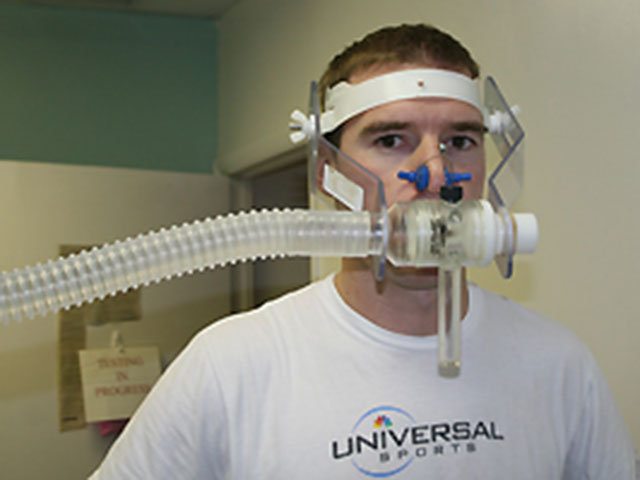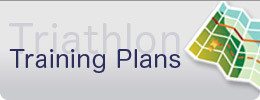What Does Your VO2 Max Number Tell You?
Triathlete Jason Devaney visited Krista Schultz, MEd, CSCS to have his VO2 max tested. He learned he has a VO2 max of 55.3 ml/kg/min, which is well above his age predicted value of 44. So what does that number tell him?
As discussed in my previous article: Understanding VO2 Max: What Exactly Is It? VO2 max can be defined as “the maximal rate at which an individual can process oxygen.”
By itself, an individual’s VO2 max number is simply a good predictor of POTENTIAL endurance sports performance that can be used as a benchmark metric to compare against other athletes and future aerobic fitness (i.e. measure improvement or degradation in aerobic capacity). Obviously, elite endurance athlete will need a minimum VO2 max to make the cut (so to speak) in determining whether they have the potential to reach the top of their sport. Jason has good potential.
Lactate Threshold and RER
Two other useful values that are determined during a VO2 max test are Lactate Threshold (LT) and Respiratory Exchange Ratio (RER).
LT (also referred to as anaerobic threshold) is the point above which lactate, a byproduct of muscle activity from the breakdown of carbohydrates, begins to accumulate more rapidly in the bloodcreating a feeling of heaviness in the working muscles and breathing increases markedly.
Exercising above the LT is not sustainable for a long period of time, but you can increase your LT with training as well as you’re ability to sustain an effort below and at LT. LT can be improved somewhat independently of VO2 max and should be considered when determining an the individual’s POTENTIAL for maximal velocity in distance races.
As an example, Jason’s LT occurred at a heart rate of 171 beats per minute. Krista then used Jason’s LT to calculate his exercise intensity heart rate training zones.
RER is the ratio of the volume of carbon dioxide you exhale versus the volume of oxygen you consume at a given exercise intensity. A lower RER means that you are consuming more oxygen relative to carbon dioxide released and thereby breaking down more fats (a nearly unlimited fuel source) rather than carbohydrates (a limited fuel source).
An RER of 0.85 means that you are burning approximately 50 percent fat and 50 percent carbohydrate. As exercise intensity increases, your body must rely more and more on carbohydrates as a fuel source. An RER over 1.00 means you are burning primarily carbohydrates.
LT typically corresponds with RER of 1.0. With endurance training, you would expect your RER value at a given intensity to come down as your body improves its ability to utilize fat as a fuel source, thereby saving limited glycogen (carbohydrate) stores.
Other Performance Factors to Consider
Keep in mind, that there’s also other performance factors to consider on race day independent of aerobic fitness and training like mental strength, nutrition / hydration (especially for longer events like marathons and Ironman triathlons), race execution (e.g. pacing on the bike or run, drafting behind another swimmer or cyclist, etc).
One of the reasons I like Ironman Triathlon is because of all the variable involved in executing a race successfully. Having a high VO2 max doesn’t keep you from blowing up on the bike or cramping on the run.
Happy training,
David
P.S. Looking for a structured approach to your triathlon or run training? Be sure to check out our library of online training plans in TrainingPeaks including off-season plans, running races and triathlons.
—
 Coach David Glover, MS, CSCS has completed 28 IRONMAN distance triathlons, which includes two sub 9 hour finishes and winning Vineman Full twice. Now, David’s passion now is helping triathlete and other endurance athletes achieve their dreams through his online triathlon education and training company, ENDURANCEWORKS. David has an MS in Exercise Physiology and is certified as a coach by IRONMAN Triathlon, USA Triathlon and USA Cycling plus has his CSCS from NSCA. After six years of living, training and coaching in the triathlon mecca of Boulder, CO, David currently resides in Southern California.
Coach David Glover, MS, CSCS has completed 28 IRONMAN distance triathlons, which includes two sub 9 hour finishes and winning Vineman Full twice. Now, David’s passion now is helping triathlete and other endurance athletes achieve their dreams through his online triathlon education and training company, ENDURANCEWORKS. David has an MS in Exercise Physiology and is certified as a coach by IRONMAN Triathlon, USA Triathlon and USA Cycling plus has his CSCS from NSCA. After six years of living, training and coaching in the triathlon mecca of Boulder, CO, David currently resides in Southern California.


